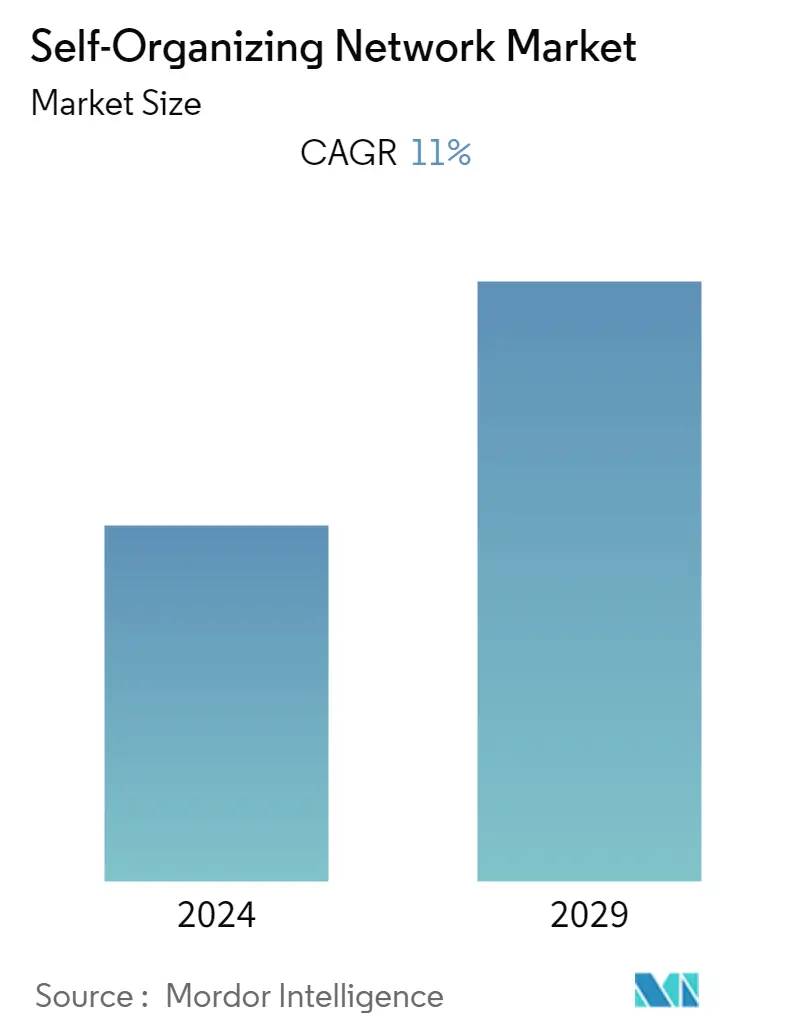Market Size of Self-Organizing Network Industry

| Study Period | 2019 - 2029 |
| Base Year For Estimation | 2023 |
| CAGR | 11.00 % |
| Fastest Growing Market | Asia-Pacific |
| Largest Market | Europe |
| Market Concentration | Medium |
Major Players
*Disclaimer: Major Players sorted in no particular order |
Need a report that reflects how COVID-19 has impacted this market and its growth?
Self-Organizing Network Market Analysis
Self-Organizing Network Market revenue is expected to grow at a CAGR of 11.0% over the next five years. A Self-Organizing Network (SON) is a mobile software solution that manipulates complex network operations to deliver enhanced network performance. It is designed to plan, manage, diagnose, and troubleshoot network errors through advanced automated configurations.
- Growing urbanization and demand for advanced systems to manage network complexities is one of the main factors driving the market growth. SON offers effective network traffic management, lower operating costs, and improved customer satisfaction. Furthermore, SON simplifies and streamlines the management of multi-technology and multi-vendor networks, allowing providers to deliver faster services at a lower cost.
- The significant growth in information technology (IT) infrastructure and vast telecommunications expenditures are expected to boost the market growth. For Instance, Ericsson recently announced that Becker Mining Systems AG had inked a multi-country reselling deal with Ericsson to market and supply Ericsson Private 5G and Ericsson Private Networks to the mining sector.
- The 5G network implementation is substantially more complicated, and this will facilitate a need for improved operations and OSS (Operations support systems). The Self-Organizing Network (SON) is included as part of the network framework as a critical driver for enhancing OSS for LTE and 5G systems. It indicates that SON will have a significant positive impact on network operations.
- For instance, Verizon's innovation on VRAN (Virtualized Radio Access Network) plans to deploy over 8,000 virtualized cell sites, with a target of delivering over 20,000 by the end of 2025. The transition to a cloud-based, virtualized architecture with standardized interfaces in every part of the network leads to better flexibility, faster service delivery, higher scalability, and improved network cost efficiency. Such initiatives from the key players in the market would create new growth opportunities for the Self-Organizing Network market.
- During the COVID-19 scenario, most people preferred work-from-home mode, thus increasing high-speed Internet services demand. Post COVID-19, the 5G subscription penetration is further growing and thus creating new growth opportunities for the Self-Oraganizing Network market.
